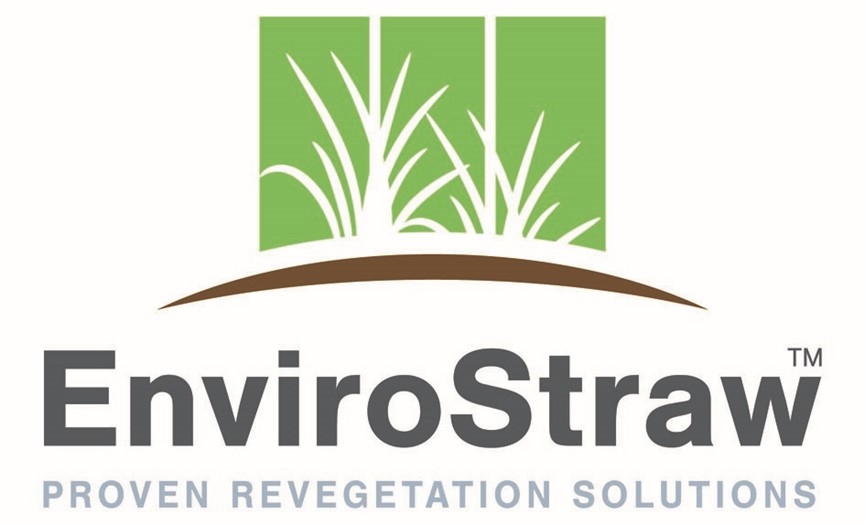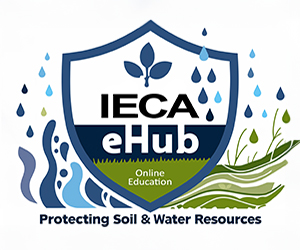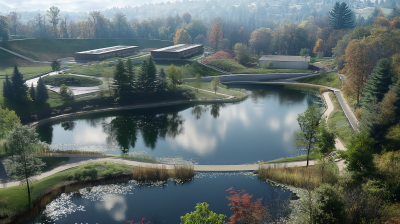
IECA Global Series: Challenge Meets Opportunity: Erosion Control Case Studies
-
Register
- Non member - $40
- Professional member - $15
- Professional Plus member - Free!
- Professional Plus Org member - Free!
- Student member - $15
- Young Professional member - $15
- Emeritus member - $15
- Discounted Professional member - $15
- Australia Member - $15
- Australia Non-Member - $40
- Australasia Professional Plus - Free!
IECA Global Series: Challenge Meets Opportunity:
Erosion Control Case Studies

Presented by: Michael Frankcombe, Environmental Management Specialist | EMM Consulting, Michael Parsonson, Director, Kirsty Dykes, Senior Environmental Advisor | Fulton Hogan, Jia Hu, Chinese Representative, Pei Xiangjun, PhD, Dean of the College of Ecology and Environment, Kwok Wing Leong, PE, M. ASCE, CISEC, NGICP, Civil Engineer, Jane Rickson, Chair in Soil Erosion and Conservation, Daniel McDonald, Consultant, Samantha Naidoo, PE< Special Projects Manager, Greg Jennings, PhD, PE. President | Jennings Environmental PLLC, Heather Amirault, Water Resources Engineer and Gustavo Salerno, CPESC
Level: Intermediate
Duration: 6 hours
Type of Course: On-Demand
Join the International Erosion Control Association (IECA) for the Challenge Meets Opportunity: Global Erosion Control Case Studies where we will explore the worlds challenges in erosion control and how innovation and collaboration has led to success. Learn from industry leaders throughout the world as they tackle erosion control to continue to provide clean water and care for the environment.
Attendees can expect to learn:
- Different approaches to challenging erosion control throughout the world.
- Regional regulations from around the globe.
- How people throughout the world are protecting our environment and working to provide communities clean water.
Please Note: All sessions are presented in English.

Australia and New Zealand
- [Australia] The Largest Reinforced Earth Embankment in the Southern Hemisphere - Kirsty Dykes
- [New Zealand] Erosion and Sediment Control in New Zealand and the Evolution of Sediment Retention Ponds - Michael Parsonson
- [Australia] Getting Dirty Down Under – The Challenges of Implementing Effective Erosion and Sediment Control in Australia - Michael Frankcombe
- The Eton Range, located on the Peak Downs Highway, is a vital route connecting the regional city of Mackay to mining and agricultural areas in Central Queensland’s Bowen Basin. The challenge—and opportunity—was to design and construct a slope stabilisation system that provided a long-term solution for managing the risk associated with landslips in this tropical climate. The Eton Range Realignment Project's (ERRP) Reinforced Earth Embankments (REE) are the largest of their kind in the Southern Hemisphere at 780m long and 45m tall. Fulton Hogan was able to design and build a geotechnically stable 215,000m3 fill embankment in order to widen and stabilise the highway in steep and treacherous rocky terrain, making travel safer for all road users.
The result – a successful and cost effective REE where both the construction materials and methods worked in close harmony with the innovative landscaping.
- Erosion and sediment control (ESC) in New Zealand has evolved and adapted to local conditions. Sediment retention ponds (SRPs) are the most efficient device available and have been developed to achieve a balance between treatment efficiency, spatial constraints and rainfall patterns. We present a brief background to environmental regulation and ESC in New Zealand, as reflected in the current best practice Auckland Council guideline Erosion and Sediment Control Guidelines for land Disturbing activities in the Auckland Region (GD05), and then described the learnings derived from monitoring the performance of SRPs on large construction sites.
- Michael’s presentation is on the challenges of erosion and sediment control in Australia. He will provide insight from his 30 plus years’ experience into some of the unique erosion and sediment control challenges resulting from Australia’s highly variable climate and ancient geology including explaining why some of the common BMP’s used in the USA are inappropriate for Australian conditions. He will also detail some of the key and unique BMP’s used in Australia including chemical treatment of dispersive/magnesic soils, soil stabilising polymers, hydraulically applied growth mediums, mineral based biologically activated fertilizers and high efficiency sediment basins.
Asia
- [Beijing, China] Ecological Remediation Solutions on Slopes in China - Jia Hu
- [Malaysia] Sediment Capture: Effective Site PE-BMPs in Malaysia - Wing Leong
- Slopes remediation are very challenge here in China, as in the pass decades, with rapid economic development, we had built miles of miles highway, railway etc and create countless of bare surface on slopes, the slopes with pure sand, the slopes with bare rock and the slopes with concrete are now all require revegetation.
- Malaysia being 4° off the Equator, enjoys high rainfall however un-timely storm events over typical laterite soils (high clay content) during construction activities has led to water quality challenges downstream. This session will discuss improving existing sediment pond performances of limited space. Explore the 3 Es of meeting silt trap compliance at minimum site footprint. Finally, this presentation will look at rapid response to turbidity control especially on linear projects.
- Geologic hazard and human engineering activities could disturb earth surface and lead to naked hillslopes, in which intensive erosion and ecological degradation would occur. The magnitude of bare lands was sharply increased in China due to the frequent geologic hazards and the large scale construction engineering projects. About 2.73 million km2 of bare lands, that is, 28.6% of China’s land area, was reported suffering severe soil loss due to the steep gradient and low coverage. Among them there are more than 5 million ha of engineered disturbed hillslopes that urgently need to be repaired, and the number is increasing with the speed of 20000-30000 ha/yr. Considering most of the current applying ecology restoration materials cannot enhance both soil strength and soil fertility at the same time, it is difficult to reinforce a disturbed hillslope and restore the vegetation in the long run. Especially in the case of steep hillslopes, effective materials and technologies are still lacked for ecology restoration.
Europe and South Africa
- [South Africa] Soil Reinforced System - M4 Durban - Samantha Naidoo
- [England] Soil Erosion Control in the UK: Policies and Practices - Jane Rickson
- The Department of Transport together with eThekwini municipality faced a major challenge as periodic heavy rainfall coupled with a burst underground concrete pipe resulted in major erosion of the embankment and partial collapse of the M4 highway. The M4 is a North-South Metropolitan route in Durban, lined by indigenous coastal forest and the ocean is a significant regional artery connecting central CBD to Kwa-Zulu Natal North Coast including King Shaka Airport. There was an urgent requirement to develop a solution that would be functional, cost effective, environmentally friendly and timeous. The Department of Transport, Municipal engineers of Coastal and Stormwater, the area-based consultant (Madan Singh and Associates) and the specialist geotechnical engineering consultant (Geosure) – formed a project team with Maccaferri South Africa and the appointed contractors Devru to derive a solution that would meet the necessary requirements in a timeous manner.
The solution was a collaborated team design including the installation of a new high-density polyethylene underground stormwater pipe, with the upper and lower slopes embankment reinforced with a proprietary 70 degree soil reinforced system, and repair to collapsed road layer works.
- Soil erosion in the UK is estimated to cost the country £1.7 million per annum. The on-site consequences include losses of productive land, nutrients and soil carbon. However, off-site damages are far higher, including declining water quality, sedimentation of watercourses, flooding and water treatment costs. Soil protection measures such as erosion control mats, cover crops, grassed waterways and vegetated buffer strips are increasingly used by UK land managers to control erosion.
- Unusually intense flooding over recent winters has caused a local river in southwest France to undercut a riverbank supporting a natural gas pipeline (DN 600 / 24"). The initial proposal involved infill with rip rap but the client, a gas network distributor - Terega - opted for a more ecologically sensitive approach. Partly to avoid regulatory hurdles and partly to meet their sustainability objectives. Using weirs to push the river thalweg mid-channel and a mix of live planting techniques, this approach should result in a stable bank with a good riparian cover by 2021.
Canada, South America, and USA
- [Canada] Sediment Control and Urban Stream Restoration: A Canadian Case Study - Heather Amirault
- [USA] Re-wilding Streams and Floodplains to Enhance Ecosystem Services in the USA - Greg Jennings
- [South America] Designing an Erosion Bank Protection Applying Numerical Models - Camisea River, Peru - Gustavo Osvaldo Salerno, CPESC
- Stream rehabilitation in degraded systems offers multiple benefits to the natural environment including erosion protection, habitat improvements, and fish passage improvements. A case study will be presented that describes how one Canadian community is using Stormwater Utility fees to build stream rehabilitation projects that stabilize eroding banks, protect infrastructure, promote the capture of excess sediments, and remove barriers to fish passage and revitalize aquatic communities. Challenges and solutions to erosion control during construction will also be discussed.
- This presentation describes the process and outcomes of re-wilding urban streams and floodplains, including daylighting piped streams, stream channel realignment and floodplain reconnection, removal of barriers to aquatic organism passage, in-stream habitat enhancement structures, and planting native riparian vegetation. Stream ecosystem restoration principles are applied to enhance physical, biological, and chemical conditions to set the stream on a trajectory toward improved ecological functions. Objectives include habitat enhancement for aquatic species of concern, enhancing floodplain storage during overbank flows, reducing stormwater impacts, and improving recreational and educational opportunities. Successful restoration projects require multi-disciplinary teams of ecologists, engineers, geomorphologists, and landscape architects to ensure that all objectives are optimized.
- In order to protect a 2 km long right margin of the Camisea River in the Amazonian jungle, Perú, basic studies were undertaken, including a sediment production test and a morphologic numerical model of the river. From them it was concluded that the proposed integral protection system, including groins and local protection works, was the most appropriate solution to get a reasonable level of security for the affected area. The place where the protection system stands is very near to an important Flowline (Gas Pipeline).
Course Last Reviewed: June, 2024
Platinum Event Sponsor

Daily Sponsors



Michael Frankcombe
Environmental Management Specialist
EMM Consulting
Michael is an environmental management specialist with more 30 years’ practical experience in the civil construction, mining, and pipeline industries. He has been a Director of the Australasian Chapter of IECA for approximately 20 years, was President for 14 years and Technical Vice President of R1 prior to Regionalisation for three years. He is a CPEC (No.1351) and is Co-chair of Technical Committee for Envirocert Int.
Michael specialises in erosion and sediment control, landform design, rehabilitation, revegetation, natural channel design and water treatment. He is recognised nationally and internationally as a soil conservation specialist. He has presented many papers on erosion and sediment control and rehabilitation in Australia, New Zealand, the Philippines and the USA. He has also presented numerous field days on revegetation practices, creek rehabilitation, erosion and sediment control and turbid water treatment.
Michael has also provided erosion and sediment control expert witness services to NSW and Qld Government Agencies, Local Governments, private companies and NGO’s and has a track record of developing practical and workable solutions where others fail using quality science to develop informed solutions.
Michael Parsonson
Director
Michael has over 20 years environmental management experience, gained from geotechnical consultancy; consents and compliance, project management and team management roles at the Auckland Regional Council; and as a director of SouthernSkies Environmental Limited since 2005. He has just completed a three year term as a member of the Board of Directors of IECA Australasia. Michael’s experience covers the assessment and preparation of regulatory consents and for various activities under regional and district plans; policy and plan development; expert witness services; erosion and sediment control design, auditing and training; development of best practice guidelines; peer reviewing; and environmental and relationship management for various projects. This breadth of experience in regulatory, technical, planning, political interface, team management and programme management roles assists in the delivery of all his projects. Michael is a certified independent hearings commissioner with 10 years experience as a decision maker on district and regional planning, infrastructure and construction and discharges.
Kirsty Dykes
Senior Environmental Advisor
Fulton Hogan
Kirsty obtained a Master of Science in Geography the University of Otago in New Zealand in 2012 with a thesis titled ‘Constructed wetlands for nutrient attenuation’ which focused on ameliorating water quality from agricultural runoff in southern New Zealand.
Upon completion of university Kirsty moved to Australia where she has been working as an environmental advisor across the mining and civil construction sectors for the past 10 years. Currently she is Senior Environmental Advisor at Fulton Hogan Construction, a large civil construction company with Projects across Australia and New Zealand. Her role as an environmental advisor is varied across all aspects of environmental management however erosion and sediment control and associated water quality and management is where her passion lies.
Kirsty became involved with IECA in 2017 when she was awarded the IECA Young Professional Scholarship and has been working with them since.
In her spare time Kirsty likes to live an active lifestyle, enjoying hiking, discovering South East Queensland and is a keen traveller, exploring all that Australia and the world has to offer.
Jia Hu
China Representative
Jia Hu is the lead sales and technical representative of Profile Products LLC in China. She has been involved in the erosion control industry for over 8 years, providing project design and development services, technical recommendations, and onsite support for private and government clients throughout China. Previously, she worked for 4 years in turfgrass management for the golf industry.
Jia also has business development, support and oversight responsibilities for Profile’s Clay Products business unit involving golf, sports turf, animal health, and other markets.
She was graduated from Michigan State University with a degree in Turfgrass Management.
Pei Xiangjun, professor, PhD
Dean of the College of Ecology and Environment
Pei Xiangjun, professor(Class 2), PhD,doctoral supervisor, The dean of the College of Ecology and Environment in Chengdu University of Technology. Major in geological hazards assessment, disaster prevention and reduction, and ecological restoration.
He is the member of Special Committee of Engineering Geology of China Geological Society, the vice-chairman of Special committee of Geology and Exploration of China Society of Hydro-electric Power Generation, member of the special committee of debris flow and Landslide of Chinese Society of Soil and Water Conservation, associate editor of 《Geoenvironmental disaster》, member of International Association for engineering geology and the environment (IAEG),chairman of Special Committee of Engineering Geology and Hydrogeology of Sichuan Geological Society,
He devotes himself in geo-hazard and eco-geological environment restoration technology research. Including more than 30 high slope reinforcement in gigantic hydroelectric projects such as Jinping hydropower station, Xiluodu hydropower station. More than 10 geo-hazards prevention and reduction along major traffic projects such as Tianshan highway, and Chengdu-Lanzhou railway. More than 30 geological disaster emergency management such as Wenchuan Earthquake, Jiuzhaigou Earthquake。 More than 10 eco-geological environment restoration in Jiuzhaigou Interest region, Ruoergai grassland, and Tibet Plateau.
Kwok Wing Leong, PE(Calif), M.ASCE, CISEC, NGICP
Civil Engineer
Work experiences include civil engineering design, development & construction supervision, of highway, geosystems on “soft-soil” load support techniques, flexible & sustainable drainage channels “landfill-caps”, water & sewerage systems, park systems & trails, storm water management, river geomorphology, re-directive river training methodology & techniques where rivers “heals-its-own-eroded embankments”, “green” & sustainable river channel protection(following MSMA principles, NFC-UK..)...
Whilst in Malaysia, established manufacturing facility to reuse palm oil and coconut waste for sustainable slope erosion protection and vegetated riverbank structures, a “green” alternative to hardcore civil works, projects under JPS MSMA program “lead-by-example”.
Engineer Leong is working on natural streambank protection using “Thalweg” Management techniques that provide a viable alternative to traditional civil engineering and meeting the river’s geomorphologic needs.
Speaker, trainer (CPESC-past, CESSWI-past), MSMA2(past), CISEC & LDP2M2 and “part-time” researcher with special focus on Best Management Practices BMPs for erosion, sediment control and water quality improvement especially from development and construction sites.
Research and development of Effective Sediment Containment Systems for Construction Sites at Reduced Site Foot-print for maximum savings of cost to the environment and owner. Applications include PE-BMPs of anionic polymers for Passive and Active Systems (PTS & ATS) with various “hybrids” to custom site requirements.
Jane Rickson
Chair in Soil Erosion and Conservation
Professor Jane Rickson has over 30 years’ experience of research, consultancy and teaching in soil and water engineering, specialising in soil erosion control. Her work has focused on better understanding of soil degradation and how it impacts on the delivery of ecosystems goods and services, including water regulation, environmental protection and carbon storage. Her work is directed at industry, farmers and policy makers. She is also involved in the training and teaching on Masters courses in Land Reclamation and Restoration, Environmental Engineering, and Soil Management, as well as bespoke short courses on soil erosion and conservation. Jane is a Fellow and current Past President of the Institution of Agricultural Engineers, a Chartered Environmentalist, Fellow of the Higher Education Academy and a member of the Institute of Professional Soil Scientists.
Daniel McDonald
Consultant
Hi, I'm a west coast Canadian now living in France. For the past 15 years I've tried to better understand the processes involved in river erosion, bank stability, habitat rehabilitation and how the construction industry can better integrate BMPs. I work with a small private consultancy that does impact assessments, regulatory permitting, construction supervision, as well as workshops for construction and environmental regulators targeting erosion & sediment control BMPs. This is fairly new in France and is slowly gaining traction.
Samantha Naidoo, PE
Special Projects Manager
Samantha Naidoo is Professional registered engineering technologist (PR Tech Eng.: Civil) and currently employed at Maccaferri Africa as a Special Projects Manager.
She started her career at Maccaferri SA as a design engineering technician after graduating from Durban University of Technology. Samantha is part of numerous organization such as ECSA, MSAICE, GIGSA, IWMSA.Samantha has spent over ten years at her previous company integrally involved in geosynthetic designs. It was her skills in design and project management that catapulted her into running the design departmentCurrently at Maccaferri Africa, Samantha oversees high level designs from conceptual to implementation stage. Samantha is very involved in special projects, to date successfully completing a marketing channel through an e-commerce platform.
Greg Jennings, PhD, PE
President, Jennings Environmental PLLC
Greg Jennings founded Jennings Environmental PLLC following his retirement from the Biological & Agricultural Engineering faculty of North Carolina State University to apply ecological engineering solutions to address environmental challenges. He has provided leadership and technical support for planning, implementation, and evaluation of more than 200 ecosystem assessment and restoration projects in the Southeast. Greg is committed to advancing the science and practice of ecological engineering through collaborations with Universities, government agencies, and practitioners working to solve environmental challenges.
Heather Amirault
Water Resources Engineer
Heather Amirault is a Water Resources Engineer at Stantec Consulting Ltd. She specializes in the areas of stream rehabilitation using natural channel design and geomorphic principles. Her recent projects include the removal of multiple barriers on Idlewood Creek for fish passage in Kitchener, ON, restoration of Kokanee spawning areas after a large flood in Kelowna, BC, and development of an ESC plan for a gold mine site. Heather has worked on stream restoration and erosion control projects across Canada.
Gustavo Osvaldo Salerno, CPESC
Fundador y Presidente
Es Fundador y Presidente del Grupo INMAC, dedicado desde hace mas de 25 años, al diseño, construcción de obras y provisión de Servicios Especializados en Control de Erosión de Suelos, Infraestructura Hidráulica y Recomposición Medioambiental, con presencia regional en Argentina, Perú, Paraguay y Bolivia. Es Fundador y Presidente de la Fundación INMAC, ONG dedicada a la difusión de la problemática de la Erosión de Suelos y el Control de los Sedimentos en Iberoamérica. Ha sido Director Ejecutivo del BOARD de IECA (International Erosion Control Association), por dos períodos - 6 años - siendo actualmente Vice-Presidente del Chapter Iberoamericano. Conferencista sobre soluciones constructivas innovadoras, ambientalmente sustentables, en Argentina, Bolivia, Brasil, Chile, Colombia, Costa Rica, Cuba, Ecuador, EEUU, España, Guatemala, Italia, México, Panamá, Paraguay, Perú y Uruguay. Trainner certificado por EnviroCert International Inc., para el dictado del Curso “Certified Profesional in Erosion and Sediment Control (CPESC)”. A lo largo de su trayectoria profesional ha recibido varios reconocimientos: Diploma de Honor de la Universidad de Buenos Aires; Premio Industry Professional of the Year, IECA (International Erosion Control Association); New Annual Service Award, EnviroCert International; Sustained Contributor Award, IECA; Premio Security, al Empresario del Año, en el rubro Empresa Constructora Especializada; entre otros.
To receive credit for this class you must watch at least one presentation. You have the option to listen to as many presentations as you wish, however you will only receive education credit for the presentations you attended. The total number of Professional Development Hours for this event is six (6).



